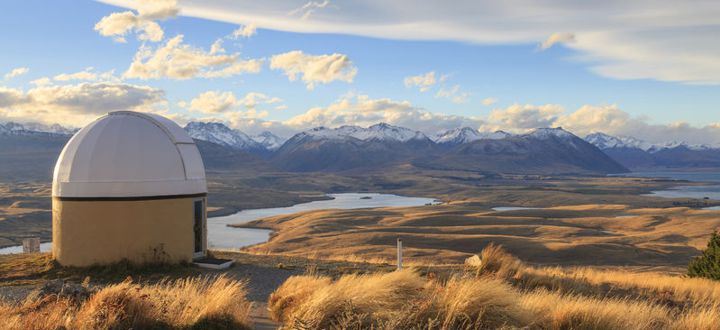In 1782 astronomer John Goodricke peered out of a room behind York Minster and made a leap forward for science.
Deaf from childhood but with a formidable intellect, he became the first person to correctly deduce why a moderately bright star in the constellation of Perseus – called Algol, or the Demon Star, brightened and dimmed at regular intervals.
It was an insight that provided a huge impetus to the study of so-called variable stars.
Now our School of Physics, Engineering and Technology is following in Goodricke's footsteps and probing fundamental questions of stellar evolution as part of international collaborative research.
Companion stars
Algol faded and brightened because a small, dimmer companion star periodically passed in front, causing its light output to fluctuate. It was an eclipsing binary system.
But we now know that many other stars pulsate because of physical changes within the star itself – these are termed 'intrinsic variables' and they come in many different forms.
One category being probed by York researchers is the Gamma Doradus variables, where tiny changes in brightness are due to complex surface vibrations and ripples.
This class of star was only recognised in the mid-1990s. The York team is using data from a one-metre telescope at the Mount John University Observatory research station at the University of Canterbury in New Zealand to obtain precise measures of the stars’ surface motions.
Dr Emily Brunsden, Associate Lecturer in the School of Physics, Engineering and Technology and Director of Astrocampus, the University of York's observatory, said:
“The vibrations emit not just at one frequency or tone, but many modes simultaneously depending on the internal properties of a star. So in a sense, each star has a unique musical 'voice'.
“In particular with Gamma Doradus stars, the pulsations penetrate deep into the stellar interior. So this means we have a golden opportunity to investigate a star's internal workings and look at the size of its core and density for example.”
Shock waves
The technique is similar to the way in which geologists use earthquakes to discover more about the structure of our planet – shock waves travel at different speeds through different layers, allowing observations to be compared with theoretical models. Fittingly, this field of study when applied to stars is called asteroseismology.
Our own Sun, 93 million miles away, has yielded many of its secrets using this kind of analysis of its minor pulsations. Advances in spectroscopic observations mean that stars many lights years away can now be similarly investigated.
Observations can be made in one of two ways. Either by measuring the changing amount of light emitted from the star (photometry) or by studying the Doppler shifts in light (spectroscopy) caused by motion due to surface vibrations. The York team is primarily focusing on the latter method.
Surface changes
Dr Brunsden explained:
“Surface changes can be very complex so it's by no means straightforward understanding all the kinds of resonances. It's not a simple case of a star contracting and expanding, and still retaining its spherical shape.
“These movements are non-radial and take some unravelling. Surface geometry is also complex with segments of a star appearing to move in and out. The speed and direction of vibrations, whether they are moving towards us or away, creates tell-tale variations in spectral lines, often just a small notch that could easily be overlooked.
“If we take enough measurements over time we can achieve a very good picture of how a star's surface is moving.”
Worldwide network
By using the Mount John University Observatory, which is at a critical longitude where there are few other large instruments, the York researchers are making a key contribution to a worldwide multi-site network of observations.
Advanced tools and numerical analysis programs have also been developed at York allowing very small surface variations to be analysed despite the vast distances of the stars under inspection. So far the international effort has probed over a dozen stars in an effort to nail down the fundamental characteristics of this class of object.
Ultimately the research could answer key questions about how stars evolve. The technique may also help us to understand whether companion stars produce 'tidal' effects on another star's surface, in the same way the Moon’s gravity creates ocean tides on the Earth.
The text of this article is licensed under a Creative Commons Licence. You're free to republish it, as long as you link back to this page and credit us.





